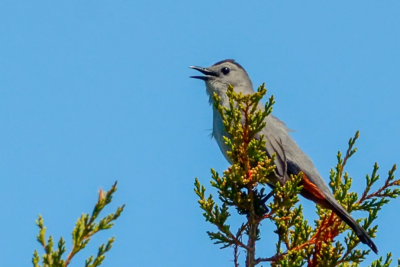
When you started learning to identify birds, which plumage and songs did you learn? Most likely it was males. In some respects, it makes sense as males defend territories with their vibrant songs and their breeding plumage is usually more unique and flashier than female plumage for a reason – females need to be inconspicuous and camouflaged on their nests to avoid predation. And, sometimes females and juveniles are really difficult to tell apart, so even for researchers, following males can be a much easier and more tempting task. But this bias towards favoring and studying male birds has also caused some hiccups in findings and some fairly significant misinformation when it comes to species behavior and habitat requirements. When females are included in the research, it turns out males and females of the same species don’t always do the same things or live in the same habitats. And there have been some interesting findings on female birds and their songs. Overlooking females can leave out accurate information for conservation plans for about half the population of many species. But this is beginning to change.
Take the study of Golden-winged Warblers highlighted in this Audubon article. The researchers always followed males and so the overwintering habitats of male warblers were targeted for conservation. But ornithologist Ruth Bennett realized that females of this same species required a much different and lower elevation habitat after nesting season. And as a result of this historical lack of information on the needs of female birds, their habitat wasn’t being protected and was being destroyed at twice the rate of that of males. She also discovered that ⅔ of North American land bird species had different overwintering habitats based on sex, but that only 10% of conservation plans took this into account.
Likewise, a more recent article on birdsong in Scientific American notes that most birdsong research overlooks female birds – most of all who sing. Of course, females are not the ones who typically come out to challenge a call as they are not the territory defenders. But they do sing, make calls and regularly communicate. As noted in the article, male and female Barn Swallows look very similar, but they sound much different. So, making the ID can be enabled by knowing both male and female calls. And, knowing this helps correct a popular misconception that only male birds sing.
It’s great to see that scientists are realizing it’s important to study both males and females of each species and let their individual needs help create a more accurate view of species behavior and habitat use. This information can make a huge difference in the future success of different species of birds through better conservation practices and increased opportunities to learn more about bird behaviors.